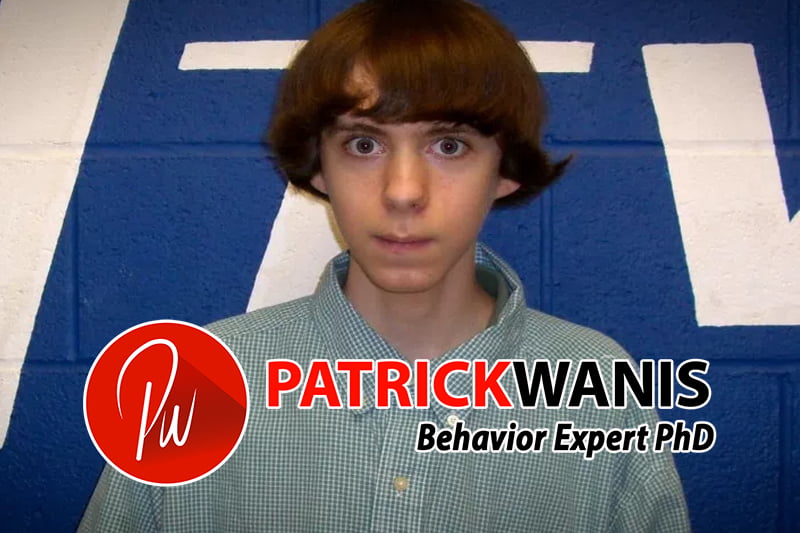
“If I were to breakdown the possible motivations and causes of mass killers into just one thing, it would be mental illness along with the experience of extreme, prolonged humiliation leading to anger and thus a desire for revenge. Psychiatric medication which has been documented to lead to violence, along with access to automatic weapons completes the formula for mass shooting.” – Patrick Wanis, PhD
School shootings and mass murders continue to be prevalent – one of the worst mass school shooting in US history was the Sandy Hook Elementary School shooting, December 14, 2012, in Newtown, Connecticut – 20-year-old Adam Lanza shot to death 20 children aged between 6 and 7 years old, and 6 adult staff members.
Andrew Kehoe, age 55, is the evil mastermind of the May 18, 1927, Bath School Disaster, a bombing that took the lives of 38 children as they attended class – 45 people were killed in total including himself and his wife, Nellie. Kehoe spent many months planting dynamite and pyrotol in the basement of the school wings.
Other school shootings: fifteen people were gunned down in the Columbine High School Massacre in 1999; 33 people were murdered in the Virginia Tech massacre in 2007 (the deadliest shooting incident by a single gunman in United States history, on or off a school campus); a teen gunman killed 15 people in a shooting rampage in two small German towns in 2009 and another man murdered ten people in a shooting spree in Alabama in 2009.
Are there common characteristics, warning signs and motives of mass killers?
Tim Kretschmer, the German teen killer wrote in an email: “I am fed up with this bloody life…Everyone laughs at me. No one recognizes my potential. I mean this seriously. I have got a weapon here and tomorrow I am going to go to my former school and give them hell.”
He had received treatment for depression at a clinic. Michael McClendon the Alabama murderer had a list of people who wronged him and Seung-Hui Cho, the Virginia Tech killer (2007), felt he had been persecuted by others. He expressed his hatred of the wealthy, “rich kids”, “debauchery”, and “deceitful charlatans.” He wrote in a manifesto sent to NBC News prior to the killing, “You forced me into a corner and gave me only one option…You just loved to crucify me. You loved inducing cancer in my head, terror in my heart and ripping my soul all this time.” There is still much speculation to this day regarding the motivation of Eric Harris and Dylan Klebold (the Columbine murderers.) Harris and Klebold had mentioned “wrath” and desire for revenge and Klebold also wrote that life was no fun without a little death, and that he would like to spend the last moments of his life in nerve-wracking twists of murder and bloodshed, saying that he would kill himself afterward in order to leave the world that he hated and go to a better place.
Russ Morley, host of the morning show on News/Talk 850 WFTL interviews Human Behavior Expert Patrick Wanis, PhD for insights into the motivations, warning signs and characteristics of mass killers and mass murderers. Patrick Wanis reveals various possible contributing factors or traits that lead to a person becoming a mass killer including:
- Male 16 – 25 (10 females have been involved in school shootings 1979-2018 but none have been mass killers)
- Exacerbation of aggressiveness and tendencies to violence due to psychiatric medication
- Depression
- Fascination with violence and/or weapons
- Psychosis – (voices, delusions, hallucinations)
- Psychopathy
- Social withdrawal – alienation, isolation
- Victim mentality
- Persecution complex
- External blame
- Extreme chronic stress
- Feelings of powerlessness
- Lack of emotional support from friends and family; bad or non-existent relationship with dad
- Lists of grievances (people who wronged the murderer)
- Feelings of extreme disappointment, frustration, failure, rejection or despair
- Inability to cope with life and its disappointments
- Triggering event – feelings that life is now hopeless, bad and beyond redeem
- Plans and desires for revenge against those who caused them to suffer (often family members or co-workers)
- Desire to hurt the world believing that they are victims in a cruel unjust, hurtful world
- Access to automatic weapons with the opportunity and intention to kill as many people as possible, in public and in daylight
Click below to listen to the interview.
Anointed “The Woman Expert” by WGN Chicago, Patrick Wanis PhD is a renowned Celebrity Life Coach, Human Behavior & Relationship Expert who developed SRTT therapy (Subconscious Rapid Transformation Technique) and is teaching it to other practitioners. Wanis’ clientele ranges from celebrities and CEOs to housewives and teenagers. CNN, BBC, FOX News, MSNBC & major news outlets worldwide consult Wanis for his expert insights and analysis on sexuality, human behavior and women’s issues. Wanis is the first person ever to do hypnotherapy on national TV – on the Montel Williams show.
